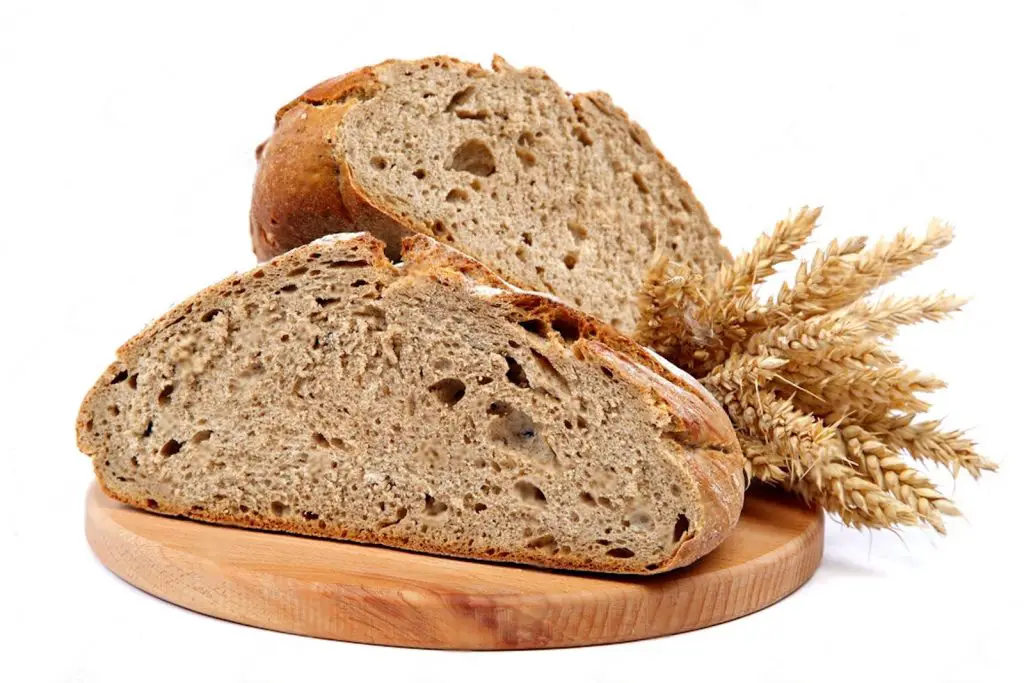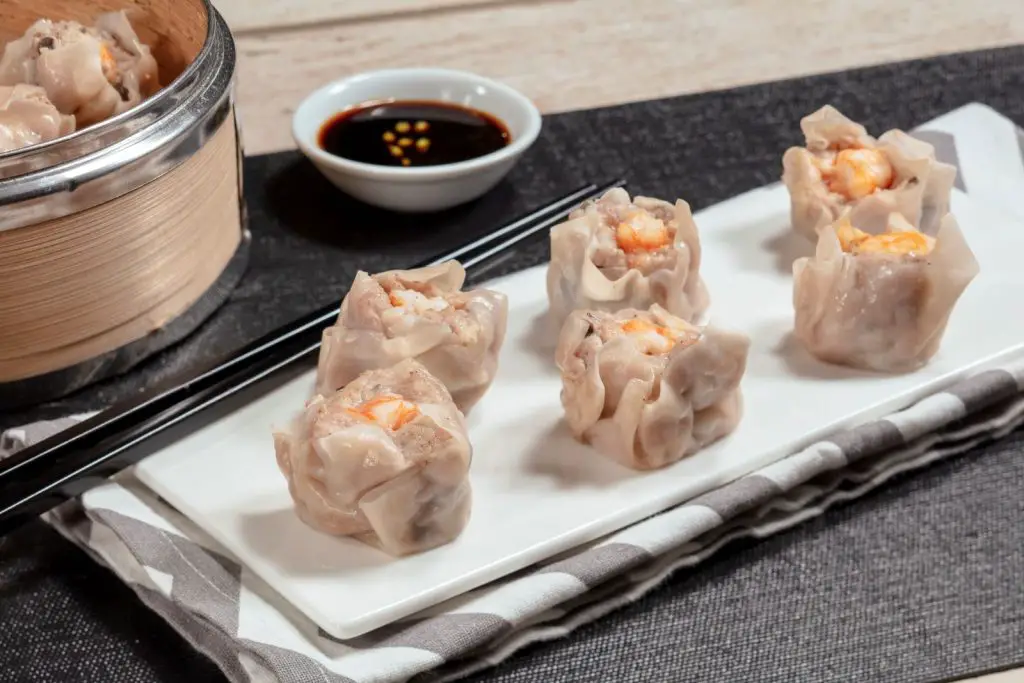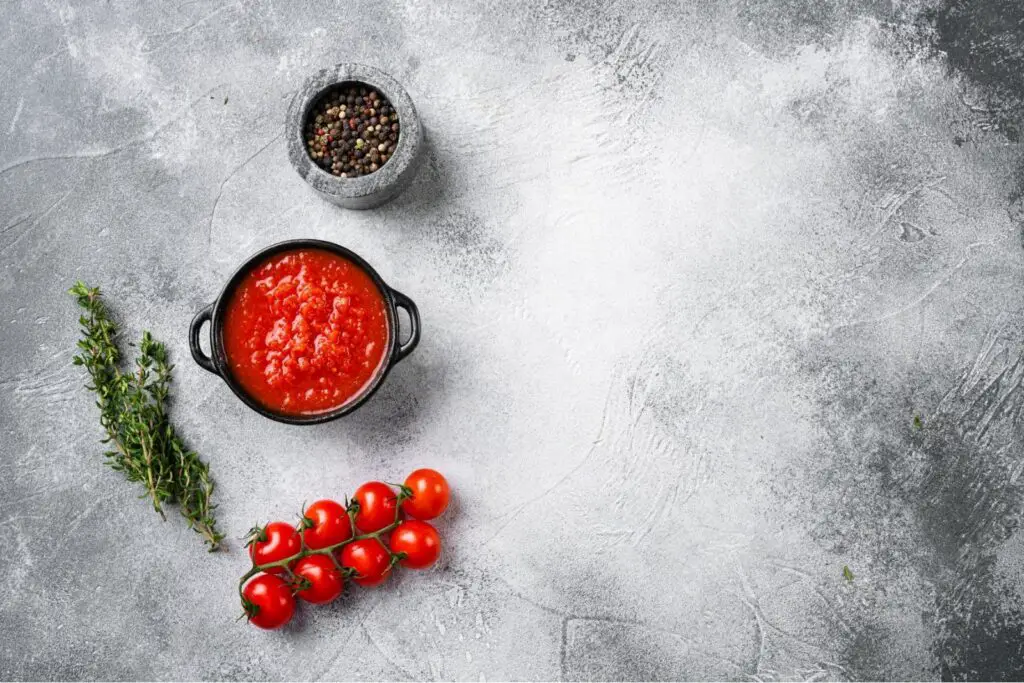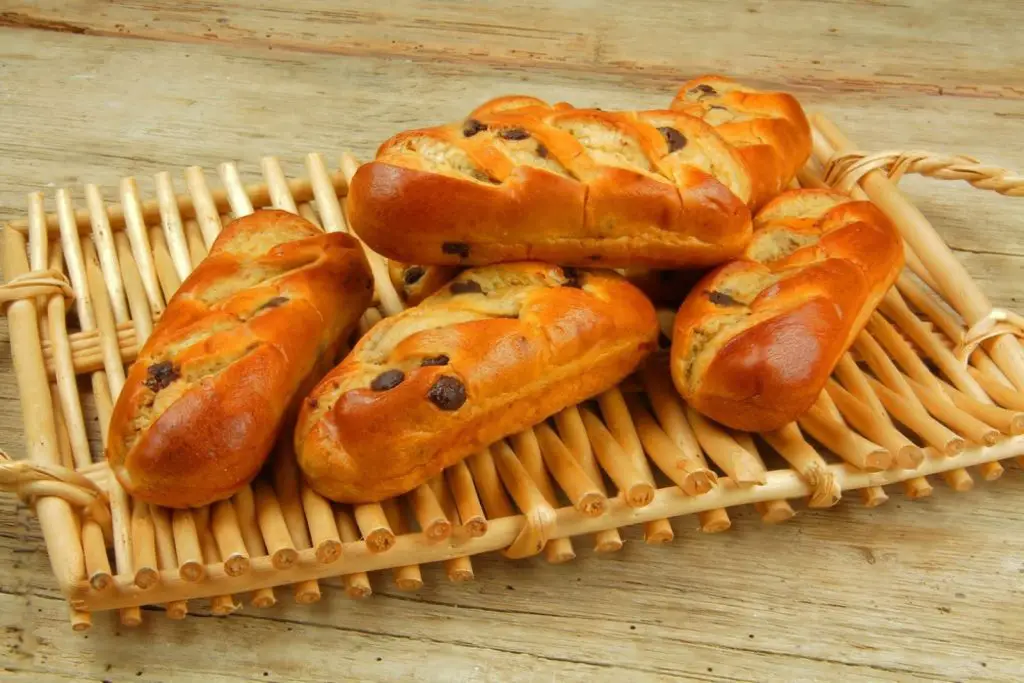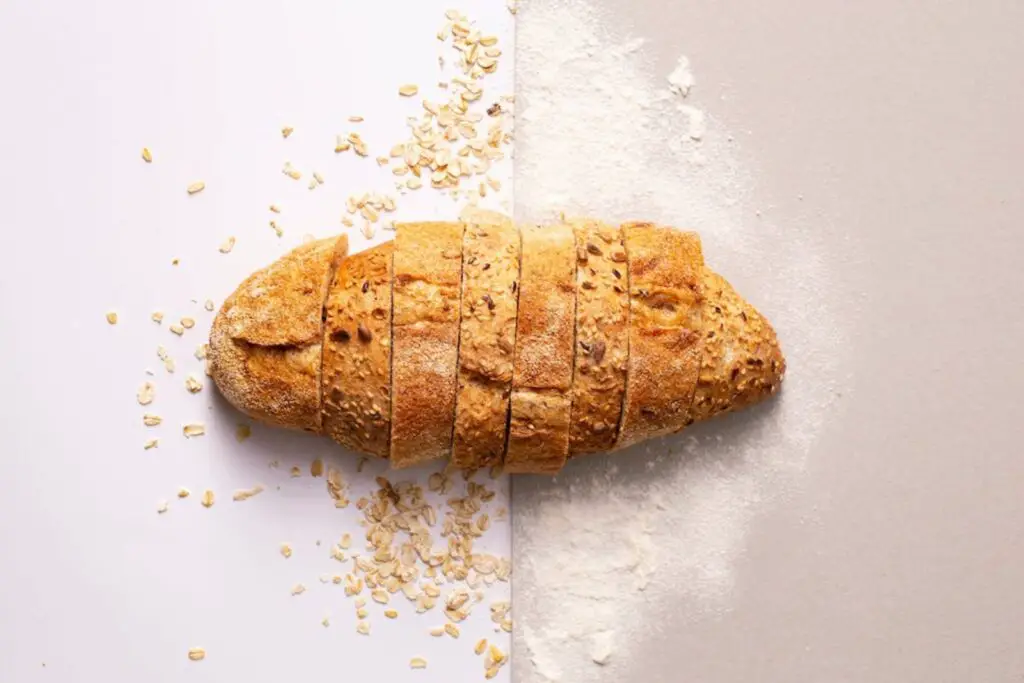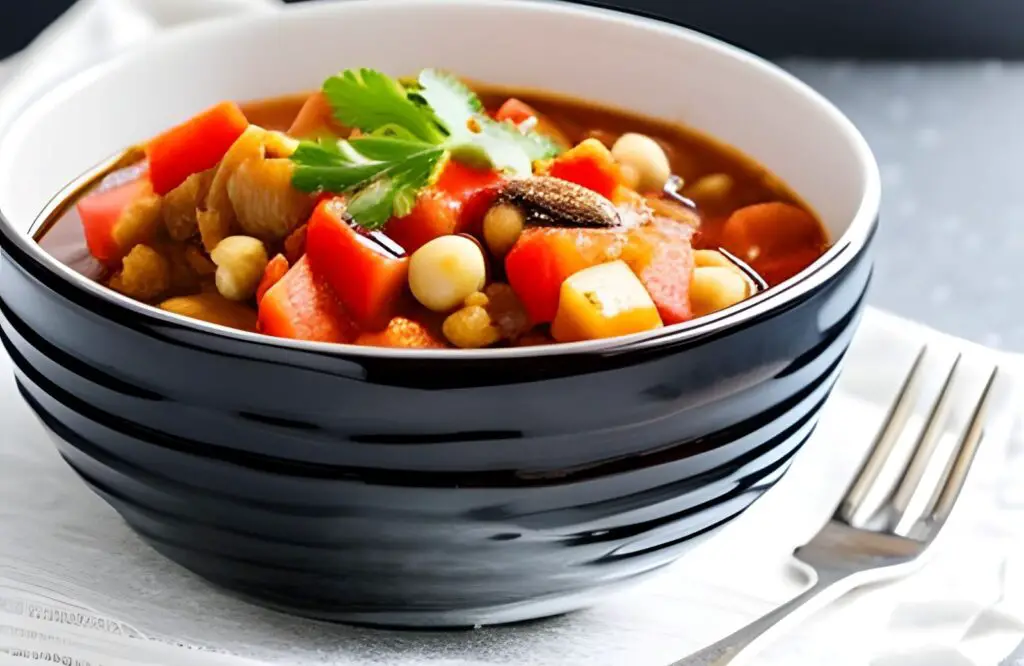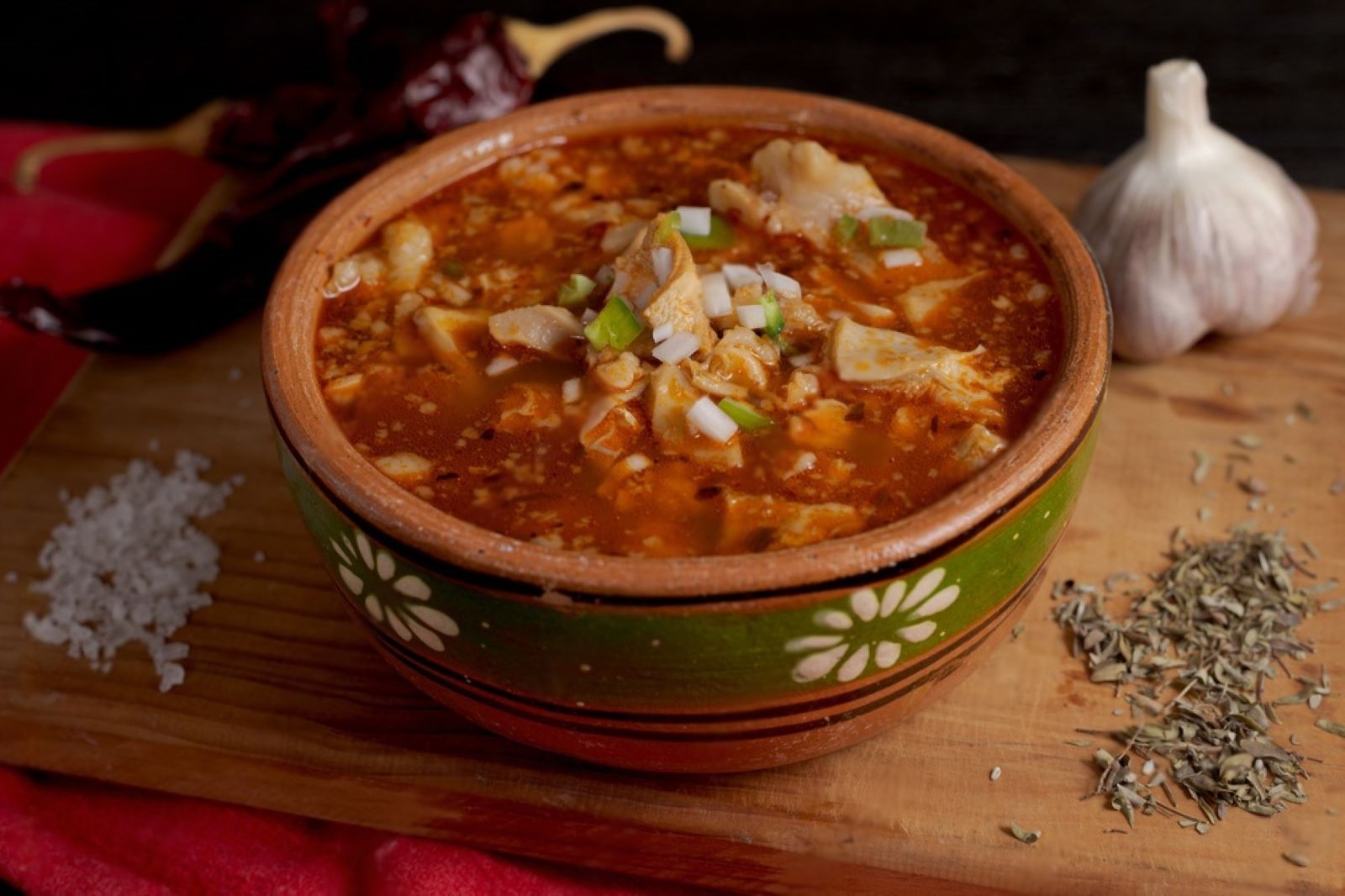
Menudo is a traditional Mexican soup made with beef tripe, hominy, and a flavorful broth. It is a beloved dish known for its rich and spicy flavors. Whether you have leftovers from a big batch or want to prepare a large batch in advance, freezing menudo can be a convenient way to preserve this delicious soup for future enjoyment. Freezing menudo properly will help maintain its taste and texture, allowing you to savor its flavors even when it’s not readily available. In this article, we will provide you with a step-by-step guide on how to freeze menudo effectively.
Here’s a guide on how to freeze menudo:
Step 1: Prepare the menudo
Before freezing menudo, it’s crucial to start with a well-cooked and properly seasoned batch. The preparation process begins with following your favorite menudo recipe or using a trusted one. Menudo typically consists of beef tripe, hominy, and a flavorful broth made from various spices and seasonings.
To ensure the best quality and taste, it’s important to cook the tripe until it becomes tender. This can be achieved by simmering it over low heat for an extended period, usually a few hours. The long cooking time helps break down the tough fibers of the tripe, resulting in a more tender texture.
In addition to cooking the tripe, it’s essential to develop the flavors in the broth. This involves adding a combination of spices, such as chili powder, cumin, garlic, and onion, to create a robust and savory taste. The seasoning process may vary depending on personal preferences and regional variations of the menudo recipe.
Once the menudo is cooked to perfection, it’s crucial to allow it to cool completely before proceeding to the next step. Cooling the menudo helps prevent bacterial growth and ensures a safe freezing process. It’s recommended to transfer the cooked menudo to a shallow container to facilitate faster cooling. Placing the container in the refrigerator for a few hours or overnight should be sufficient.
Can I freeze menudo made with different types of meat, like chicken or turkey?
While traditional menudo is made with pork or beef, it is possible to make menudo with different types of meat like chicken or turkey. However, it’s important to note that the texture and flavor of the dish may vary when using alternative meats. When freezing menudo made with chicken or turkey, ensure that the meat is fully cooked, cooled, and stored properly in airtight containers or freezer bags to maintain its quality.
Step 2: Portion the menudo
After the menudo has cooled completely, it’s time to portion it into individual serving-sized portions. This step is important for several reasons.
Firstly, dividing the menudo into individual portions makes it more convenient when it comes to defrosting and reheating. Instead of thawing and reheating the entire batch, you can simply take out the desired amount of menudo for a single serving. This way, you avoid waste and can enjoy the soup without having to defrost more than you need.
Additionally, portioning the menudo allows for more efficient freezing and thawing. By dividing the soup into smaller portions, it freezes and thaws more quickly and evenly. This helps maintain the quality and texture of the menudo, as it reduces the risk of freezer burn or uneven reheating.
When it comes to storing the portioned menudo, there are a few options to consider. Freezer-safe containers are a popular choice as they provide a sturdy and reusable option for freezing. Make sure the containers are airtight to prevent freezer burn and maintain the flavors of the menudo. It’s advisable to leave some headspace in the containers to account for expansion during freezing.
Alternatively, resealable plastic bags can be used for convenient storage. They are especially useful if you have limited freezer space or prefer a more flexible option. Place the individual portions of menudo into the bags and remove as much air as possible before sealing them tightly. This helps prevent freezer burn and preserves the quality of the soup.
Regardless of the storage option you choose, it’s a good practice to label each container or bag with the date of freezing and a description of the contents. This makes it easier to identify the menudo later on and ensures that you can keep track of its storage duration.
Should I freeze menudo in individual portions or in a large batch?
The decision to freeze menudo in individual portions or in a large batch depends on your specific needs and preferences. Freezing menudo in individual portions allows for convenient and portion-controlled servings, making it easier to thaw and reheat only what you need. On the other hand, freezing menudo in a large batch can be time-saving if you plan to serve it to a group or if you prefer to have ready-made meals that can be quickly reheated. Consider your serving size requirements and meal planning habits to determine the best approach for you.
Step 3: Seal the containers
Properly sealing the containers is an important step in the freezing process to maintain the quality and flavor of the menudo. The sealing method will depend on whether you are using freezer-safe containers or resealable plastic bags.
If you opt for freezer-safe containers, it’s essential to ensure they are airtight. This means that the lids or covers fit tightly, creating a secure seal. By preventing air from entering the containers, you minimize the risk of freezer burn. Freezer burn occurs when air comes into contact with the food, causing dehydration and adversely affecting its taste and texture. Airtight containers help maintain the moisture and flavor of the menudo, preserving its quality during freezing.
On the other hand, if you choose to use resealable plastic bags, it’s crucial to remove as much air as possible before sealing them tightly. Excess air in the bag can lead to freezer burn and deteriorate the flavor and texture of the menudo over time. To remove air from the bag, you can use a technique called the water displacement method. Simply place the portioned menudo in the bag, seal it partially, then carefully submerge the bag in water, allowing the water to push out the air. Once most of the air is removed, seal the bag completely.
Remember to handle the containers or bags with care to avoid any spills or leaks, ensuring a mess-free freezing process.
Can I freeze menudo in plastic containers or should I use freezer bags?
While it is possible to freeze menudo in plastic containers, using freezer bags is generally recommended. Freezer bags are more flexible and can conform to the shape of the menudo, allowing for better space utilization in the freezer. Additionally, freezer bags provide a tighter seal, minimizing the risk of freezer burn and preserving the quality of the menudo for longer periods. However, if you prefer using plastic containers, ensure they are airtight and specifically designed for freezer storage.
Step 4: Label and date the containers
Labeling and dating the containers or bags is a crucial step in the freezing process, as it helps you keep track of the contents and ensures the freshness of the menudo. This simple practice provides several benefits:
- Identification: By labeling each container or bag, you make it easier to identify the menudo later on. When frozen, different foods can start to look similar, making it difficult to distinguish them without proper labeling. Adding a label with a clear description of the contents helps avoid confusion and ensures you can easily find the menudo when you’re ready to use it.
- Storage duration: Dating the containers allows you to monitor the storage duration of the menudo. It’s recommended to consume frozen menudo within a certain timeframe for optimal quality. By adding the date of freezing to the label, you can keep track of how long the menudo has been in the freezer. This ensures that you can use it within the recommended storage period, preventing any potential loss of flavor or texture over an extended time.
- Freshness and rotation: Labeling also helps with maintaining freshness and rotation of the frozen menudo. By indicating the date of freezing, you can easily follow a first-in, first-out (FIFO) system. This means using the oldest frozen menudo first before moving on to the more recently frozen batches. This practice ensures that the menudo is consumed at its best quality while minimizing waste.
To label the containers or bags, you can use adhesive labels, waterproof markers, or freezer tape. Write down the date of freezing and a brief description of the contents, such as “Menudo – MM/DD/YYYY.” Place the label in a visible area to easily identify the menudo.
Step 5: Freeze the menudo
Once you have properly sealed the containers or bags of menudo, it’s time to place them in the freezer for the freezing process. Proper handling and arrangement are important during this step to ensure efficient freezing and prevent any spills or leaks. Here’s why it matters:
- Efficient freezing: It’s important to arrange the sealed containers or bags in a way that allows for efficient freezing. Air needs to circulate around the containers or bags to facilitate uniform freezing. Ensure that there is enough space between them, especially if they are in close proximity. This will enable the cold air to circulate freely and freeze the menudo evenly, preventing any potential inconsistencies in texture or flavor.
- Easy stacking: Stacking the containers or bags can help maximize the use of space in your freezer. By arranging them in a stable and organized manner, you can make the most of the available freezer space. Stacking also helps with easy accessibility when you need to retrieve a specific portion of menudo.
- Prevent spills or leaks: Placing the containers or bags on a flat surface initially is advisable to prevent any spills or leaks during the freezing process. Liquids, including the broth in the menudo, can expand as they freeze. Placing the containers on a flat surface helps ensure that they remain stable and secure, reducing the risk of spills or leaks that could create a mess in your freezer.
To further protect against potential leaks, you can consider placing the sealed containers or bags on a tray or baking sheet before putting them in the freezer. This additional layer of protection can catch any possible leaks or spills and prevent them from spreading within your freezer.
Step 6: Storage duration
Menudo, when properly stored in the freezer, can typically maintain its quality for months. It’s important to be mindful of the storage duration to ensure the optimal taste and texture of the frozen menudo. Here’s why it’s crucial and how to check for any signs of deterioration:
- Quality maintenance: While freezing can preserve the menudo, the quality may start to decline over time. The flavors may gradually diminish, and the texture may change, resulting in a less enjoyable eating experience. By consuming the frozen menudo within the recommended storage duration of three months, you can maximize the freshness and taste of the soup.
- Freezer burn prevention: Freezer burn is a common issue that can affect the quality of frozen foods, including menudo. It occurs when the surface of the food is exposed to air, leading to dehydration and a deterioration in flavor and texture. Even when stored within the recommended duration, it’s important to check for any signs of freezer burn before consuming the menudo.
To check for freezer burn, inspect the containers or bags for any discoloration or dry patches on the surface of the menudo. Freezer-burned areas may appear white, gray, or brownish. If you notice any significant signs of freezer burn, such as a strong off-putting odor or a substantial change in texture, it’s advisable to discard the affected portion.
To minimize the risk of freezer burn, ensure that the containers or bags are properly sealed to prevent air exposure. Additionally, using airtight freezer-safe containers or removing as much air as possible from resealable plastic bags during the sealing process can help preserve the quality of the menudo.
How long can I keep frozen menudo before it goes bad?
When stored in the freezer at 0°F (-18°C) or below, frozen menudo can typically be kept for up to 3 months without significant loss in quality. However, for the best flavor and texture, it is recommended to consume it within 1-2 months. Beyond that time, while the menudo may still be safe to eat, it may experience freezer burn or a decline in taste and texture. Properly storing the menudo in airtight containers or freezer bags can help extend its shelf life.
Step 7: Thaw and reheat
When you’re ready to enjoy the frozen menudo, it’s important to thaw it properly and reheat it to a safe serving temperature. Here’s how to thaw and reheat the menudo for a delicious and safe eating experience:
- Thawing: To thaw the frozen menudo, transfer a portion from the freezer to the refrigerator. It’s best to plan ahead and allow it to thaw overnight. Thawing in the refrigerator ensures a gradual and safe thawing process, minimizing the risk of bacterial growth. The cold temperature of the refrigerator keeps the menudo at a safe temperature range, preventing any potential foodborne illnesses.
- Reheating on the stovetop: Once the menudo is thawed, you can reheat it on the stovetop. Place the desired portion of menudo in a saucepan or pot and heat it over medium-low heat. Stir occasionally to ensure even heating. Heat the menudo until it reaches a safe serving temperature of 165°F (74°C) throughout. Using a food thermometer can help you accurately monitor the temperature. Once the desired temperature is reached, the menudo is ready to be served.
- Reheating in the microwave: Alternatively, you can reheat the menudo in the microwave. Transfer the thawed portion of menudo to a microwave-safe dish and cover it to retain moisture. Heat it in the microwave using short bursts, stirring in between, to promote even heating. Ensure that the menudo reaches a safe serving temperature of 165°F (74°C) throughout. Again, using a food thermometer can help you confirm the temperature. Once heated to the proper temperature, the menudo is ready to be enjoyed.
It’s important to note that reheating the menudo to a safe temperature ensures the elimination of any potential bacteria that may have grown during the thawing process. This step is crucial for food safety.
Other related questions
Can I refreeze previously thawed menudo?
It is generally not recommended to refreeze previously thawed menudo. When you thaw menudo, the freezing and thawing process can affect its texture and flavor. Additionally, each time you freeze and thaw food, there is a risk of bacterial growth and degradation of quality. It is best to consume the thawed menudo within a reasonable time frame after thawing to ensure optimal taste and safety.
How do I know if my frozen menudo has gone bad?
There are a few signs to look out for to determine if frozen menudo has gone bad. Firstly, check for any noticeable changes in color or texture. If the menudo appears discolored, has a slimy texture, or has an off-putting odor, it is likely spoiled and should not be consumed. Additionally, if there are any signs of freezer burn, such as ice crystals or dried-out areas, the quality may be compromised. Trust your senses and, when in doubt, it is safer to discard the frozen menudo to avoid any potential foodborne illnesses.
Can I use frozen menudo with the fresh ones?
Yes, you can use frozen menudo alongside fresh ones in certain situations. For instance, if you have a small amount of fresh menudo and want to stretch it to serve more people, you can incorporate some thawed frozen menudo to supplement the dish. However, keep in mind that the texture and flavor of the frozen menudo may be slightly different from the fresh one. It’s best to ensure both the fresh and frozen portions are fully heated and cooked through before combining them.
Can I freeze menudo with the tripe and hominy together, or should I separate them?
It is generally recommended to freeze menudo with the tripe and hominy together. Freezing them together helps maintain the integrity and flavors of the dish. When you thaw and reheat the menudo, both the tripe and hominy will retain their textures and flavors, providing a more authentic and cohesive eating experience. However, if you prefer to separate them for personal preferences or specific meal preparations, you can freeze them separately as well.
Is it safe to freeze menudo made with pork or beef?
Yes, it is safe to freeze menudo made with pork or beef. Freezing helps preserve the meat and prevents bacterial growth. Ensure that the pork or beef used in the menudo is fresh and cooked thoroughly before freezing to maintain its quality and safety. Proper storage in the freezer will help retain the flavor and texture of the meat when thawed and reheated.
Can I freeze menudo with additional garnishes, such as lime and cilantro?
It is generally not recommended to freeze menudo with additional garnishes like lime and cilantro. These garnishes are best added fresh when serving the dish to maintain their vibrant flavors and textures. Freezing lime slices or cilantro can result in a loss of their freshness and contribute to changes in taste and appearance.

